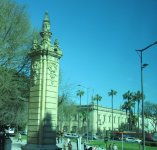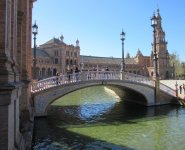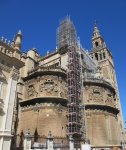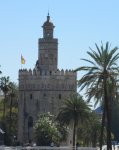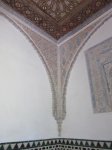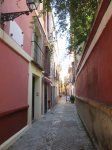Seville was founded as
the Roman city of Hispalis. It later became known as Ishbiliya
after the Muslim conquest in 712. During the Muslim rule in
Spain, Seville came under the jurisdiction of the Caliphate of
Córdoba before becoming the independent Taifa of Seville; later
it was ruled by the Muslim Almoravids and the Almohads until
finally being incorporated into the Christian Kingdom of Castile
under Ferdinand III in 1248.After the discovery of the Americas,
Seville became one of the economic centres of the Spanish Empire
as its port monopolised the trans-oceanic trade and the Casa de
Contratación wielded its power, opening a Golden Age of arts and
literature. In 1519, Ferdinand Magellan departed from Seville for
the first circumnavigation of the Earth. Coinciding with the
Baroque period of European history, the 17th century in Seville
represented the most brilliant flowering of the city's culture;
then began a gradual economic and demographic decline as silting
in the Guadalquivir forced the trade monopoly to relocate to the
nearby port of Cádiz. The 20th century in Seville saw the
tribulations of the Spanish Civil War, decisive cultural
milestones such as the Ibero-American Exposition of 1929 and Expo
'92, and the city's election as the capital of the Autonomous
Community of Andalusia.
Click on the folder you want to look at
<- Back to the index


